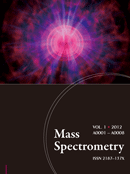9 巻, 1 号
選択された号の論文の14件中1~14を表示しています
- |<
- <
- 1
- >
- >|
Review
-
2020 年 9 巻 1 号 p. A0082
発行日: 2020/03/28
公開日: 2020/03/28
[早期公開] 公開日: 2020/02/15PDF形式でダウンロード (779K) HTML形式で全画面表示 -
2020 年 9 巻 1 号 p. A0083
発行日: 2020/03/31
公開日: 2020/03/31
[早期公開] 公開日: 2020/02/21PDF形式でダウンロード (1727K) HTML形式で全画面表示 -
2020 年 9 巻 1 号 p. A0092
発行日: 2020/12/04
公開日: 2020/12/04
[早期公開] 公開日: 2020/10/24PDF形式でダウンロード (8328K) HTML形式で全画面表示
Original Article
-
2020 年 9 巻 1 号 p. A0080
発行日: 2020/03/17
公開日: 2020/03/17
[早期公開] 公開日: 2020/01/22PDF形式でダウンロード (2080K) HTML形式で全画面表示 -
2020 年 9 巻 1 号 p. A0081
発行日: 2020/03/31
公開日: 2020/03/31
[早期公開] 公開日: 2020/02/15PDF形式でダウンロード (362K) HTML形式で全画面表示 -
2020 年 9 巻 1 号 p. A0084
発行日: 2020/04/23
公開日: 2020/04/23
[早期公開] 公開日: 2020/03/07PDF形式でダウンロード (920K) HTML形式で全画面表示 -
 2020 年 9 巻 1 号 p. A0085
2020 年 9 巻 1 号 p. A0085
発行日: 2020/06/10
公開日: 2020/06/12
[早期公開] 公開日: 2020/04/04 -
2020 年 9 巻 1 号 p. A0086
発行日: 2020/07/13
公開日: 2020/07/13
[早期公開] 公開日: 2020/06/04PDF形式でダウンロード (4136K) HTML形式で全画面表示 -
2020 年 9 巻 1 号 p. A0089
発行日: 2020/08/26
公開日: 2020/08/26
[早期公開] 公開日: 2020/07/15PDF形式でダウンロード (1978K) HTML形式で全画面表示 -
2020 年 9 巻 1 号 p. A0090
発行日: 2020/10/31
公開日: 2020/10/31
[早期公開] 公開日: 2020/09/18PDF形式でダウンロード (897K) HTML形式で全画面表示 -
2020 年 9 巻 1 号 p. A0091
発行日: 2020/12/04
公開日: 2020/12/04
[早期公開] 公開日: 2020/10/01PDF形式でダウンロード (4910K) HTML形式で全画面表示
Technical Report
-
2020 年 9 巻 1 号 p. A0079
発行日: 2020/02/06
公開日: 2020/02/06
[早期公開] 公開日: 2019/12/30PDF形式でダウンロード (1611K) HTML形式で全画面表示 -
2020 年 9 巻 1 号 p. A0087
発行日: 2020/08/03
公開日: 2020/08/03
[早期公開] 公開日: 2020/06/09PDF形式でダウンロード (334K) HTML形式で全画面表示 -
2020 年 9 巻 1 号 p. A0088
発行日: 2020/08/20
公開日: 2020/08/20
[早期公開] 公開日: 2020/07/04PDF形式でダウンロード (563K) HTML形式で全画面表示
- |<
- <
- 1
- >
- >|
